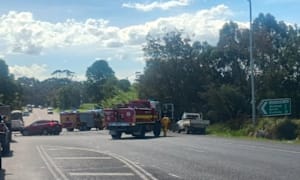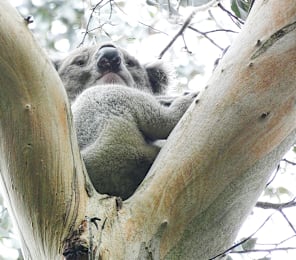WHILE the past is celebrated at Coal Creek, a recent visit to its ‘T. Wrench Pioneer Bootmaker’ shop proved to be just as much about the future, with young Wrench descendant Zachary Wilmot an exponent of the trade.
He was at the tourist park’s 50th Birthday celebration, chatting with visitors about his family’s bootmaking history, how he was inspired to learn to make boots, and what that entails.
Thomas Wrench set up business in Korumburra in 1890, having learned bootmaking from his father Joseph in Staffordshire, and went on to teach the trade to his sons, one being Zachary’s great grandfather Albert.
Albert began his bootmaking apprenticeship aged just 12.
He eventually passed the trade on to his three sons, Alan, Harold and Zachary’s grandfather Jack.
Bootmaking skipped the next generation of the Wrench family before making a resurgence, with Zachary’s mum Rosemary Wrench, a senior curator at Museums Victoria, delighted at the unexpected turn of events.
The family originally ceased making boots in the late 1940s, with Albert continuing to work alongside his sons in their shoe shop and repair business.
When bootmaking items were relocated to Coal Creek, it was considered the fifth Wrench premises in Korumburra since the business began, with Rosemary explaining the display was expected to remain a story set in the past.
However, Zachary’s passion for bootmaking was unleashed in 2019.
While there was nobody left in the family to pass on bootmaking skills, he ultimately made use of items preserved at Coal Creek that once served his ancestors.
“I did a course at RMIT in Melbourne to learn how to make shoes, and from that came down and used the pattern pieces and things to make a pair of the miners boots that my relatives made in the past,” he said.
While Zachary had always had an interest in the family trade, it wasn’t until his aunt informed him there was a suitable course available that he realised it was a realistic option.
“There is a growing market for good quality handmade boots, and definitely ones made in Australia,” he said.
Zachary described the process of making shoes and boots.
“You have to figure out what style you want and then you make the patterns off the last, which is the mould that you use to make the shoes, and you cut the patterns out on the leather, sew them together into the upper; once you’ve got the rough shape you place it back over the last and start to pull the leather tight until it forms the shape of the shoe.
“You wait a few hours for the leather; once it’s stretched, it needs a few hours to take form and once you’ve done that you can attach the sole.”
He explained that in the old days the sole was nailed on, but glue is now used, requiring a few hours of drying time.
It is still possible to source bootmaking materials from within Australia, with some tanneries continuing to operate.
At Coal Creek, Zachary was wearing a pair of boots he made and displayed another pair he produced for his dad based on the family’s miners boot patterns but without the hobnails.
He is also keen to make an old-style pair of football boots such as those produced by his ancestors in the past, with that project just for fun.
While Melbourne-based Zachary is determined to make a career of bootmaking, he currently works fulltime as a forklift driver for a furniture company, earning the funds required to buy the necessary materials and equipment to begin transitioning into his chosen trade.
He then intends to gradually add more equipment, with some suitable machinery being costly.










